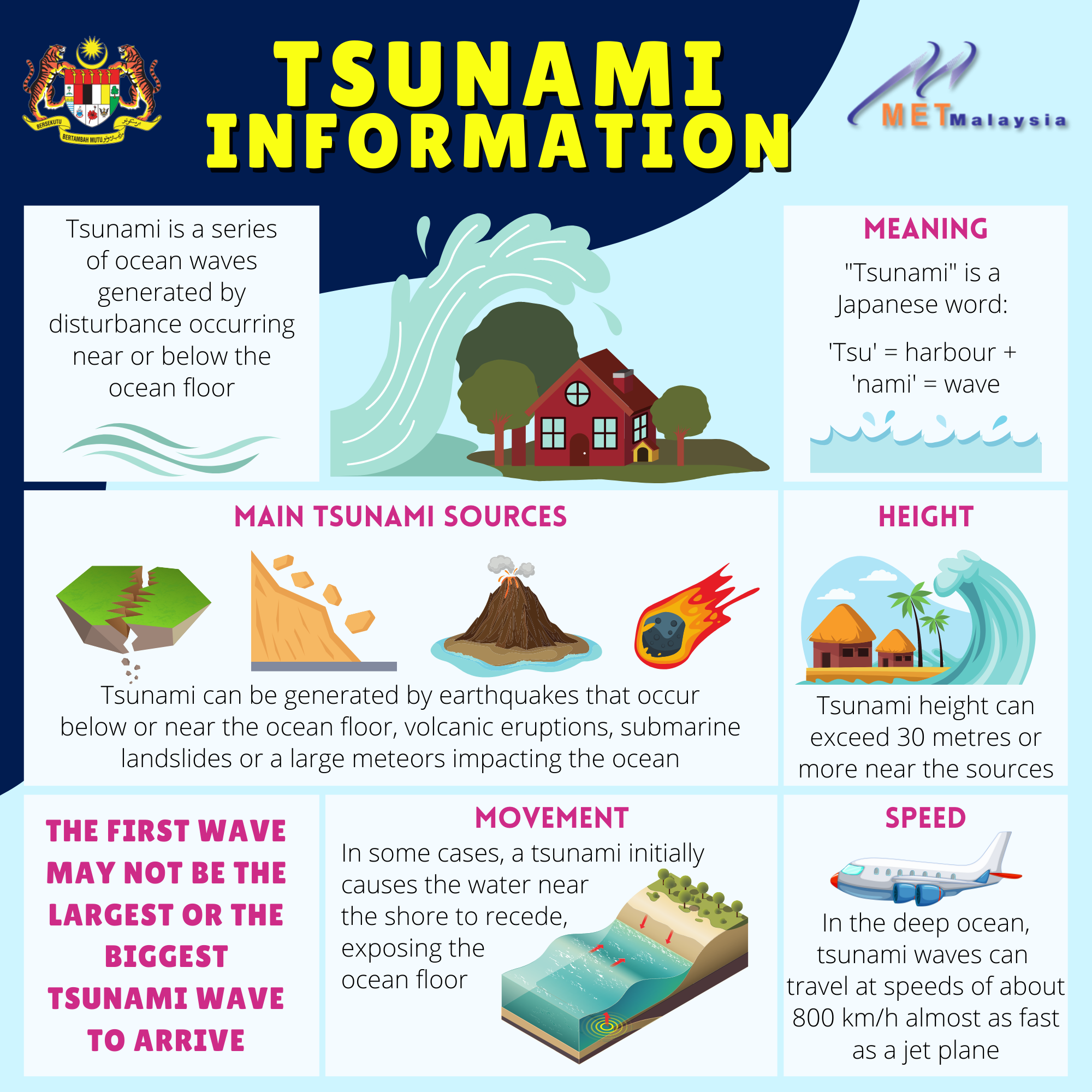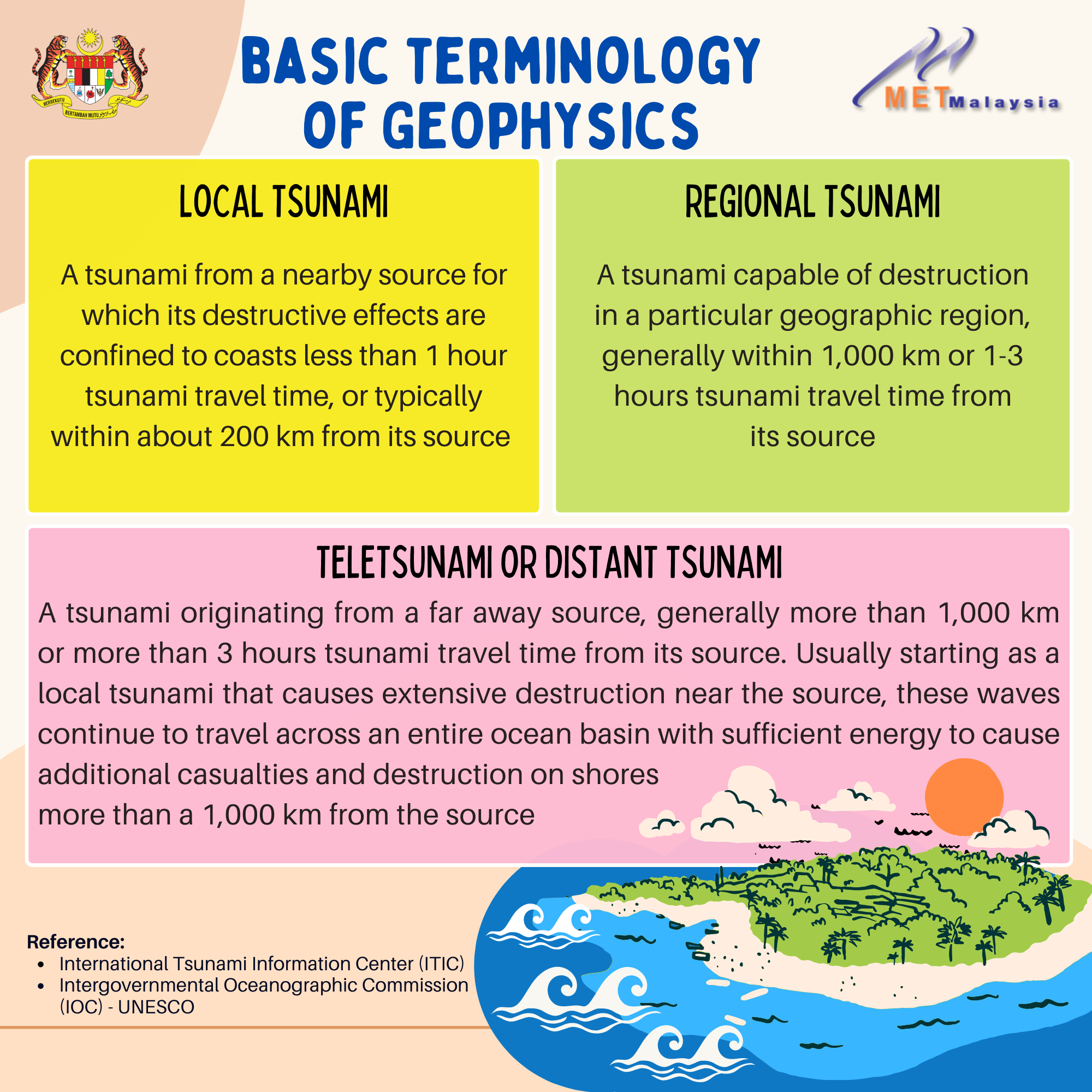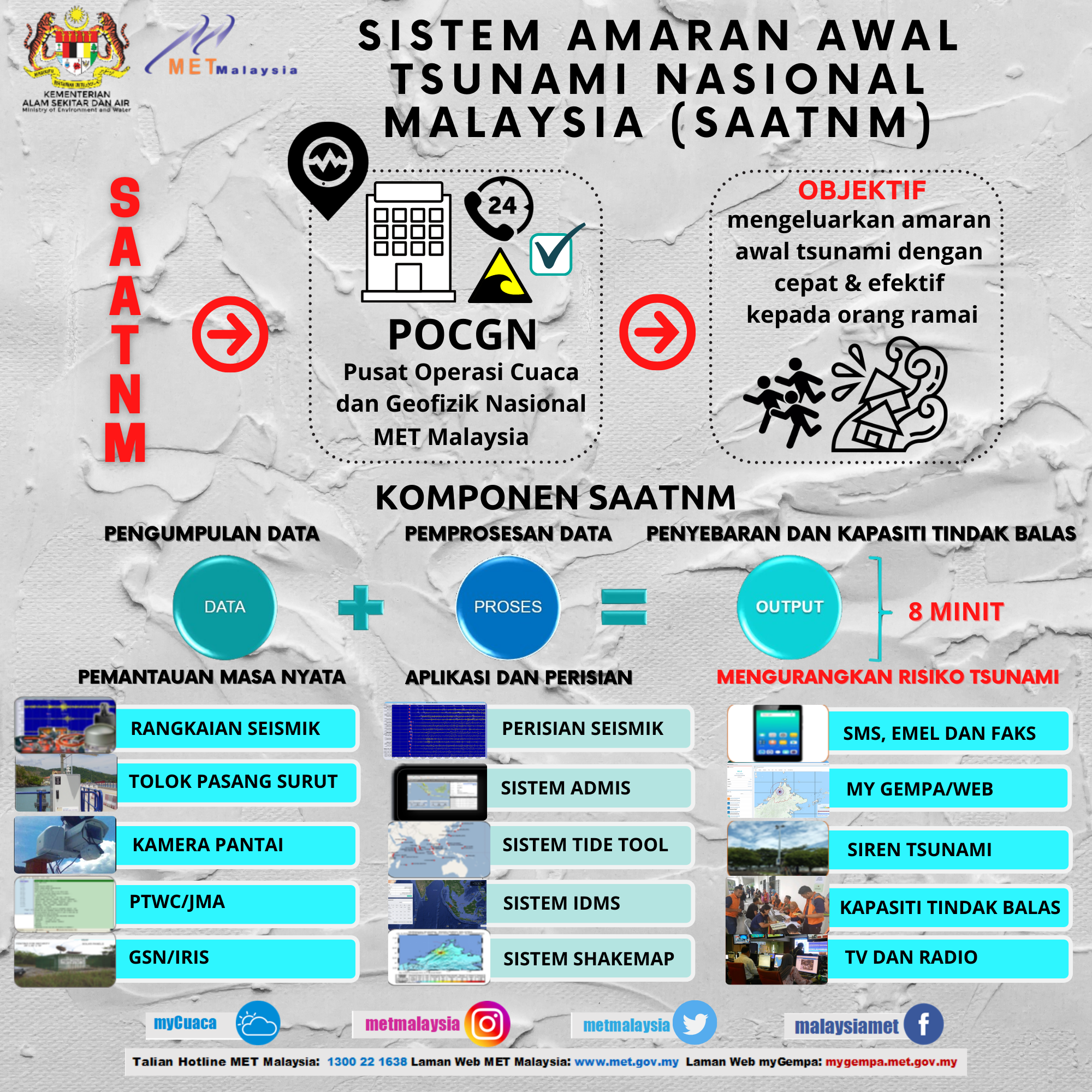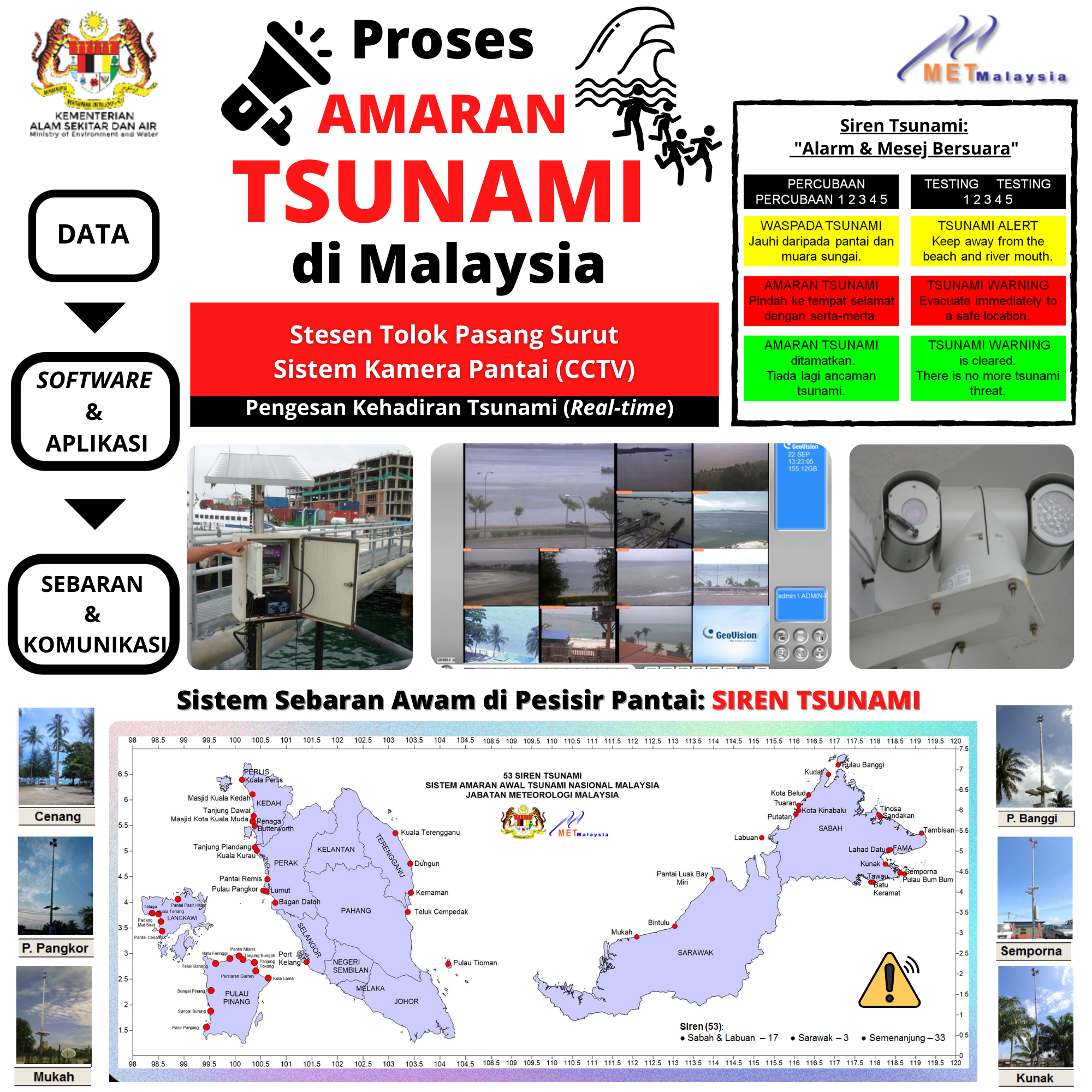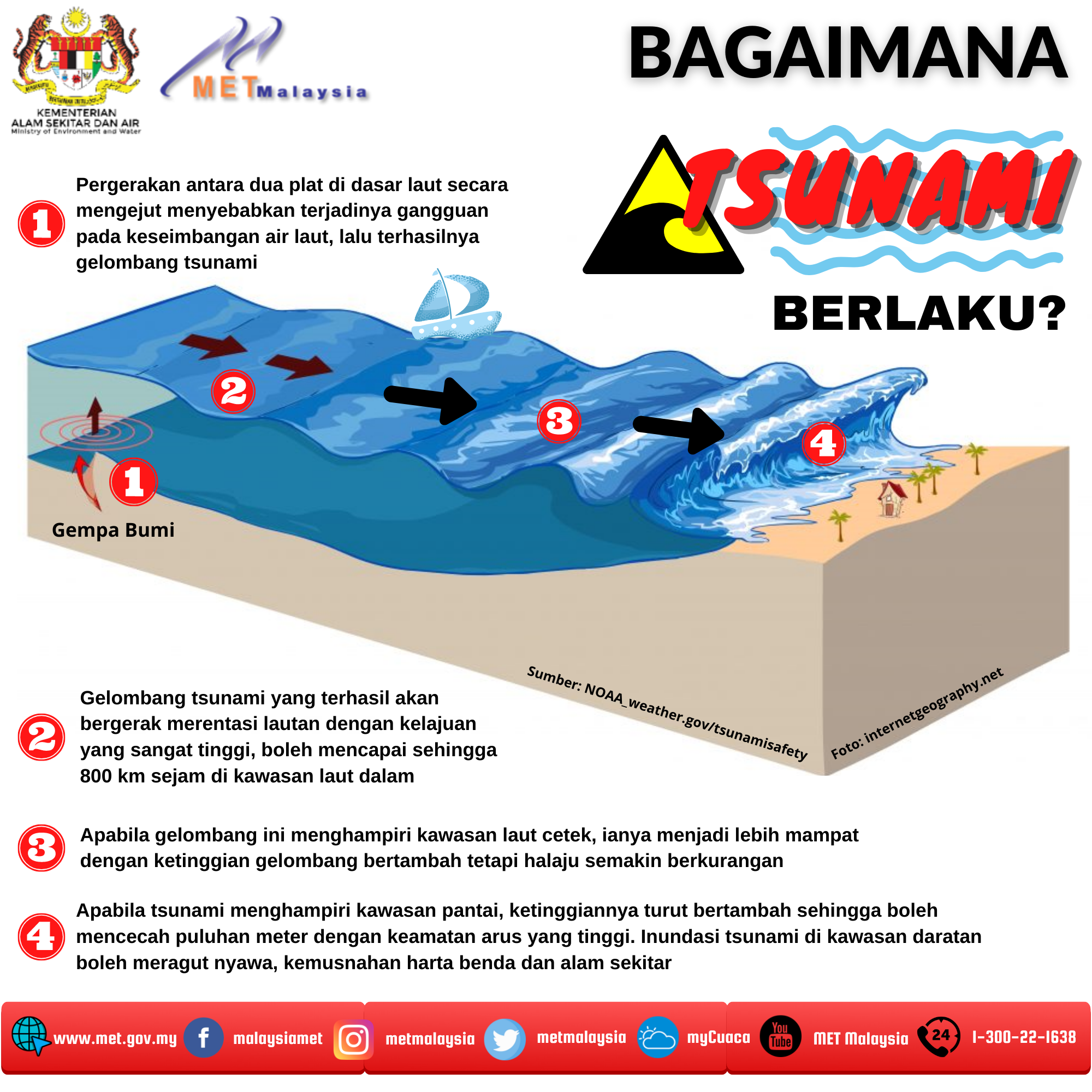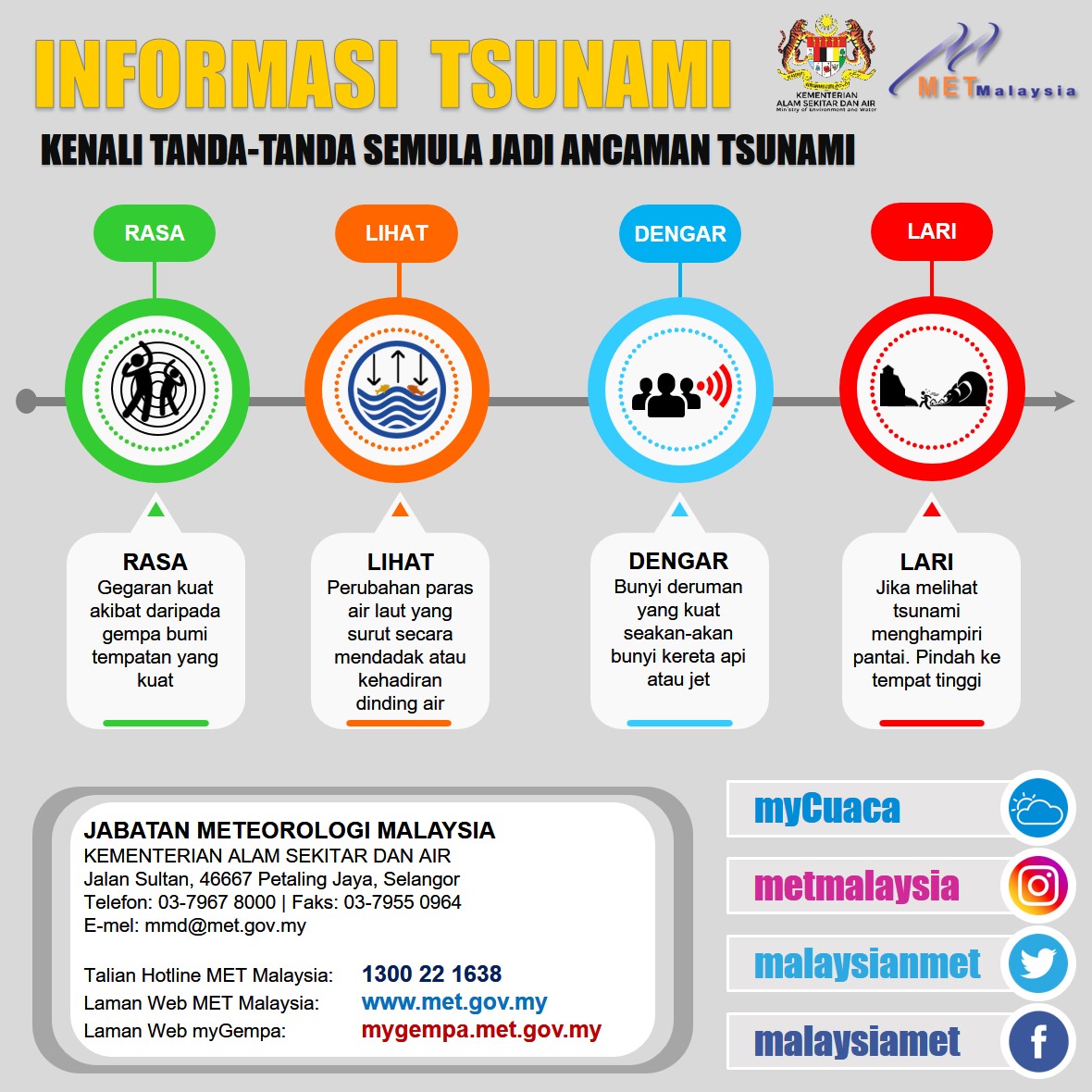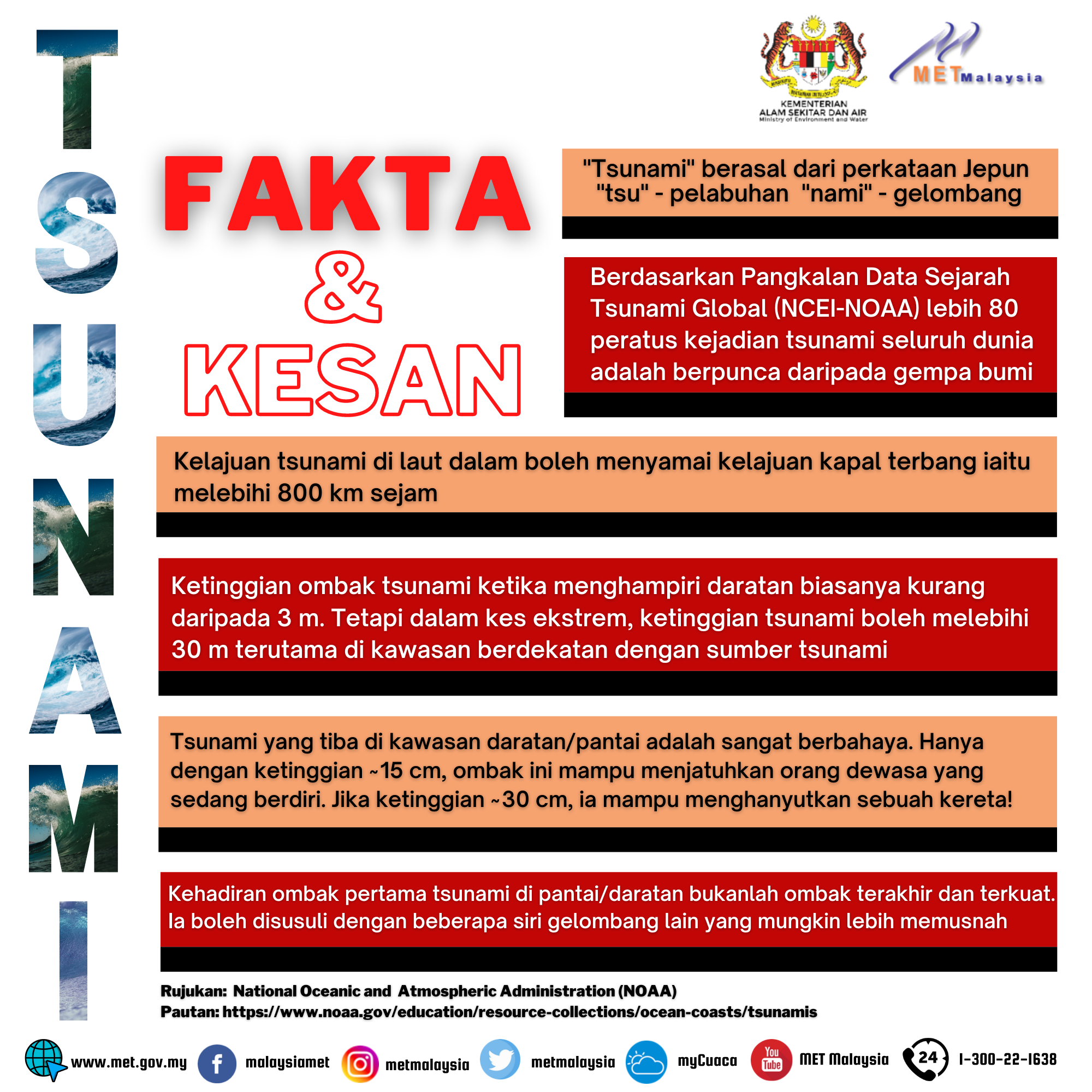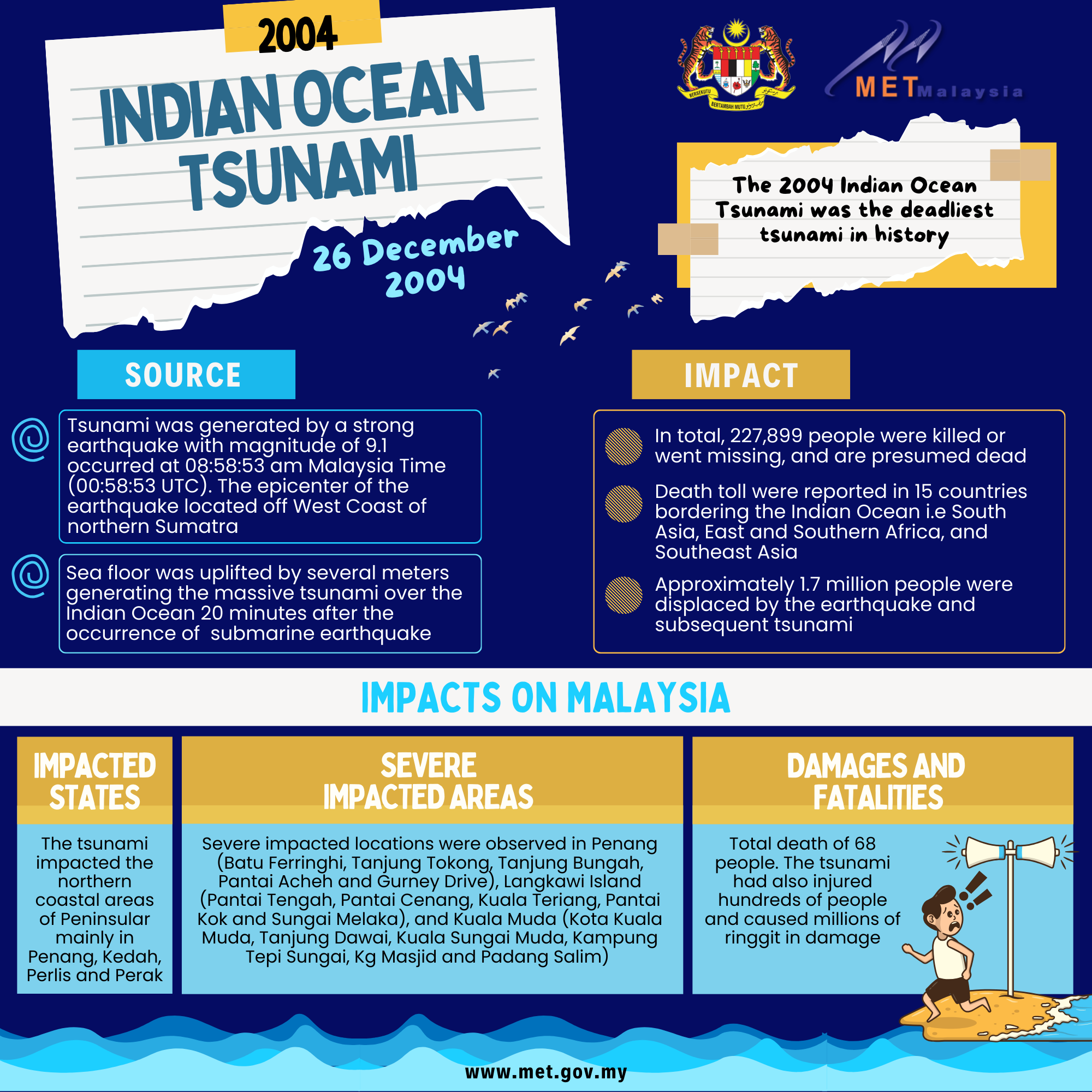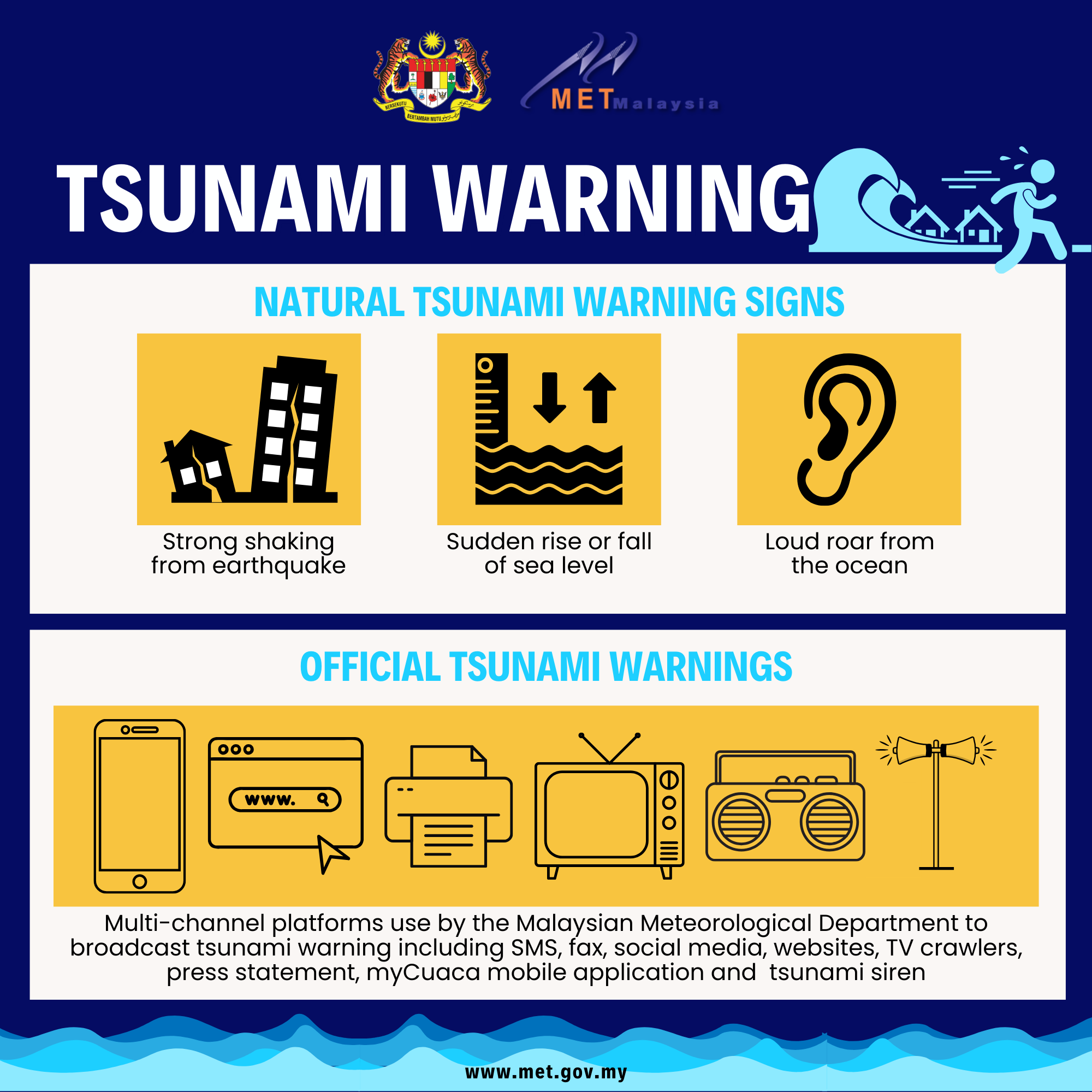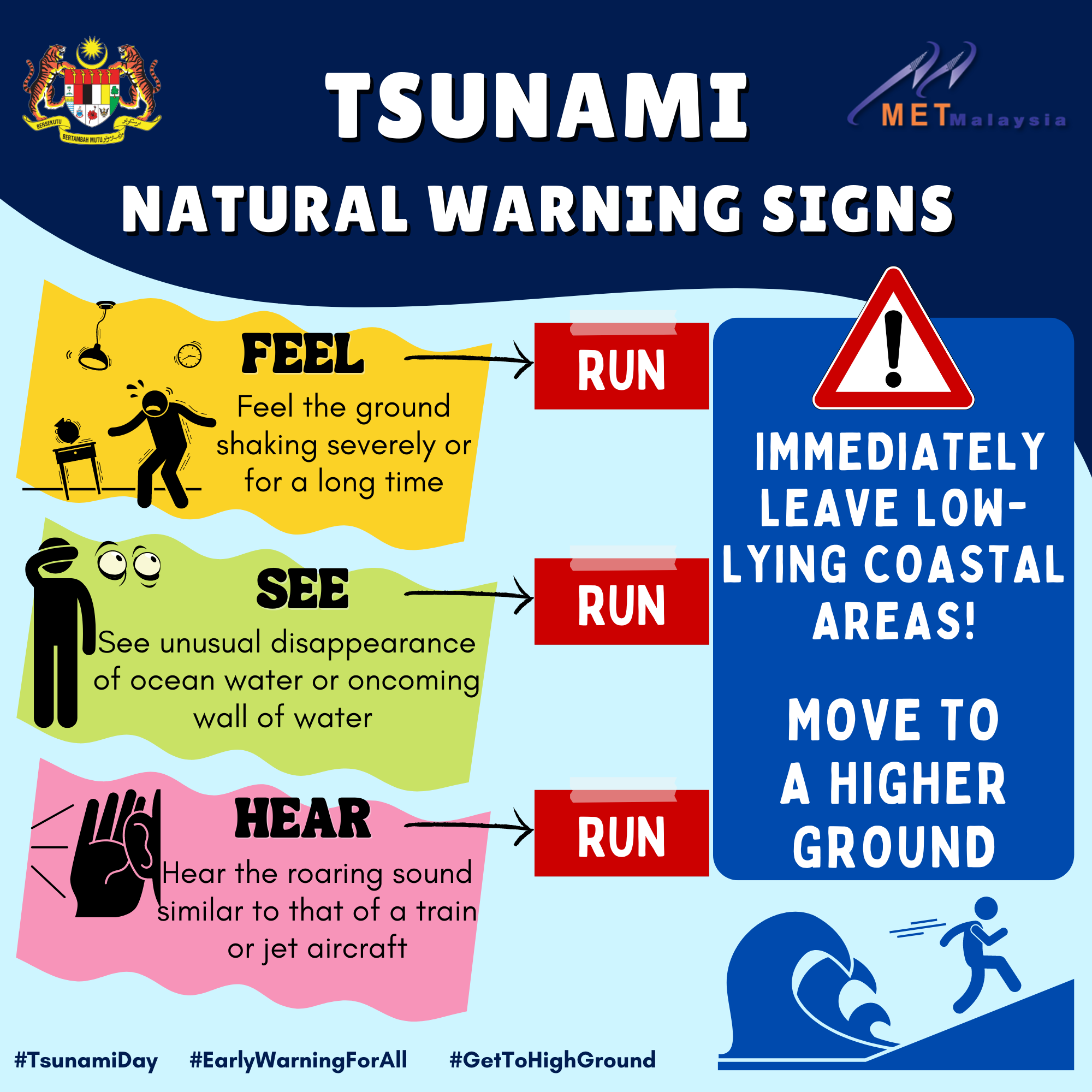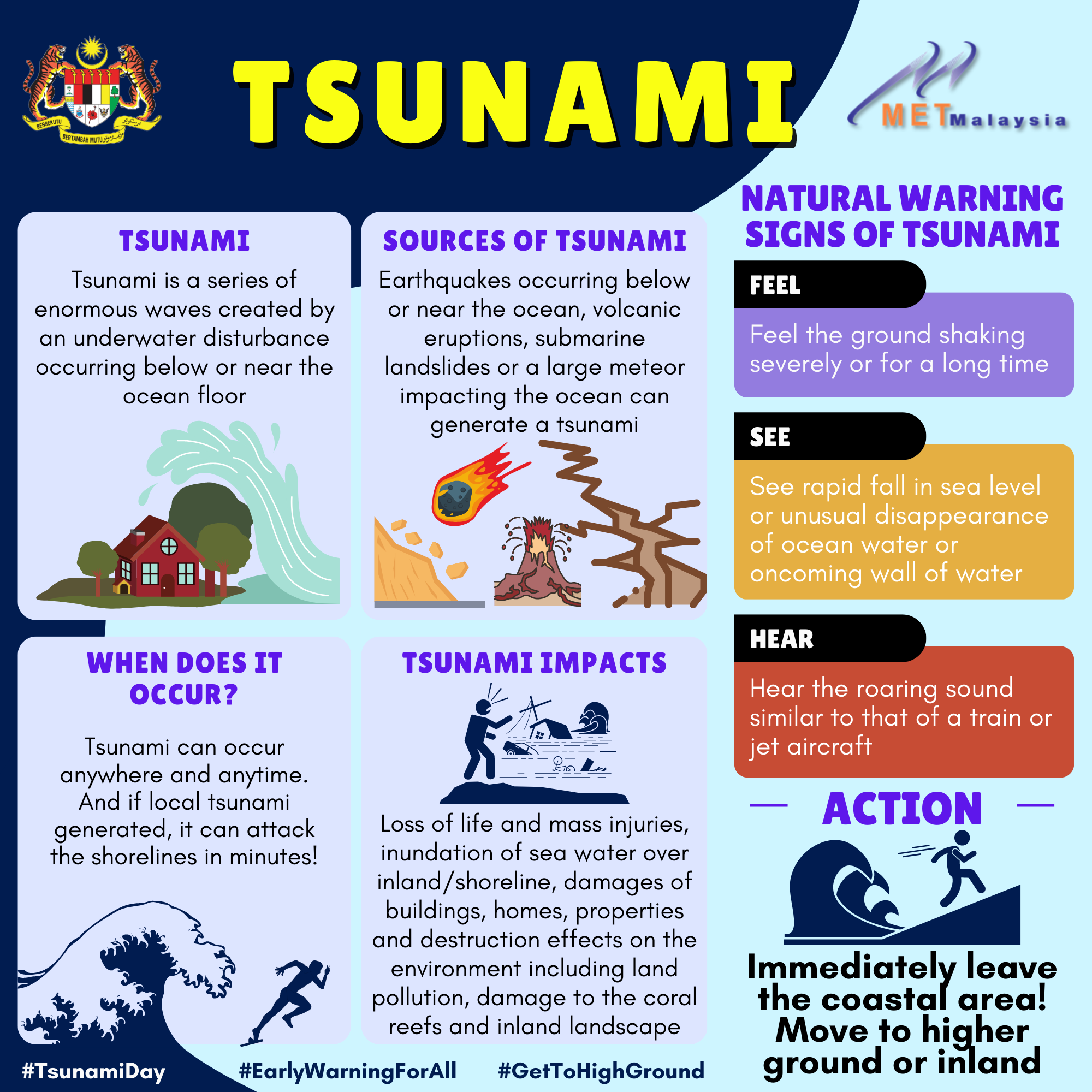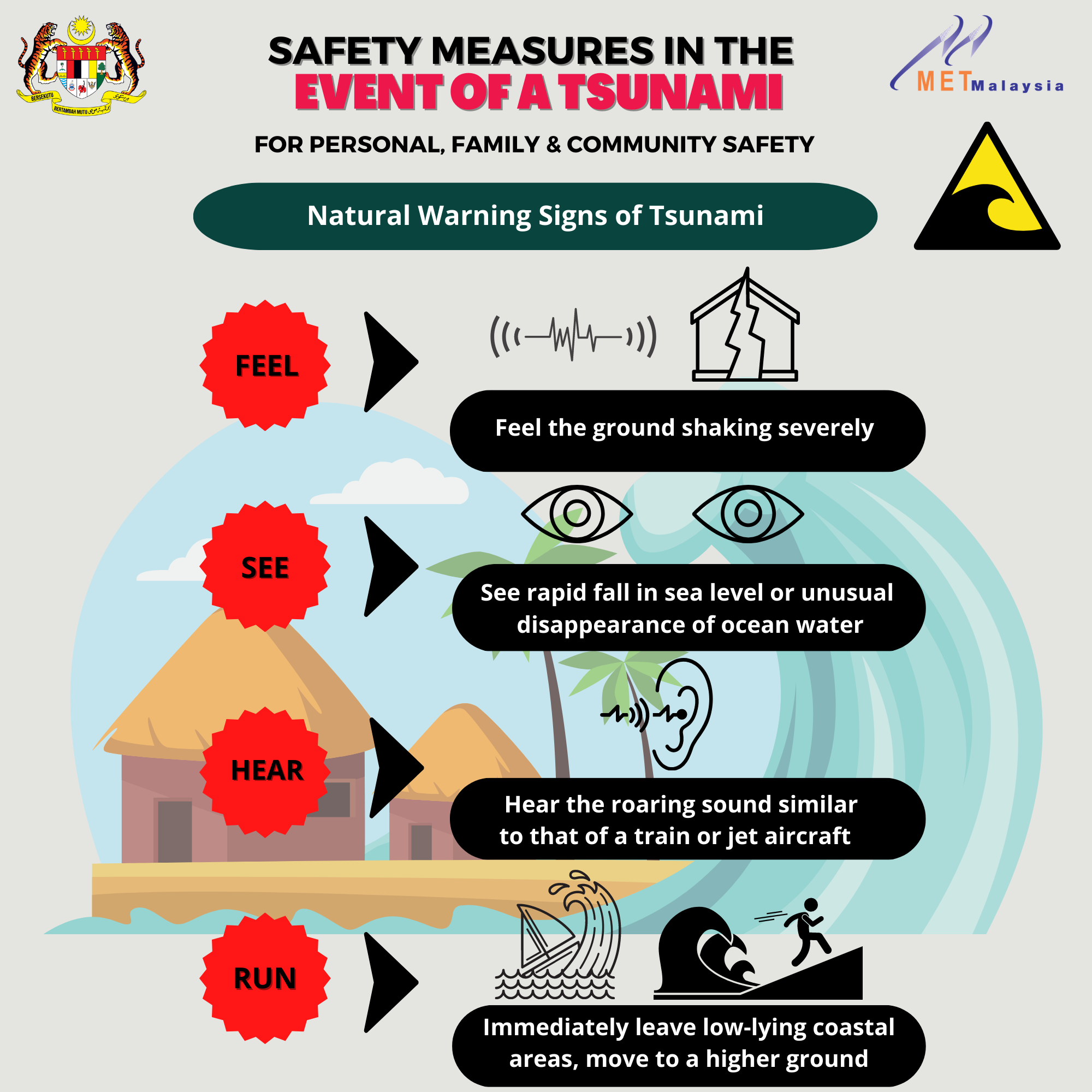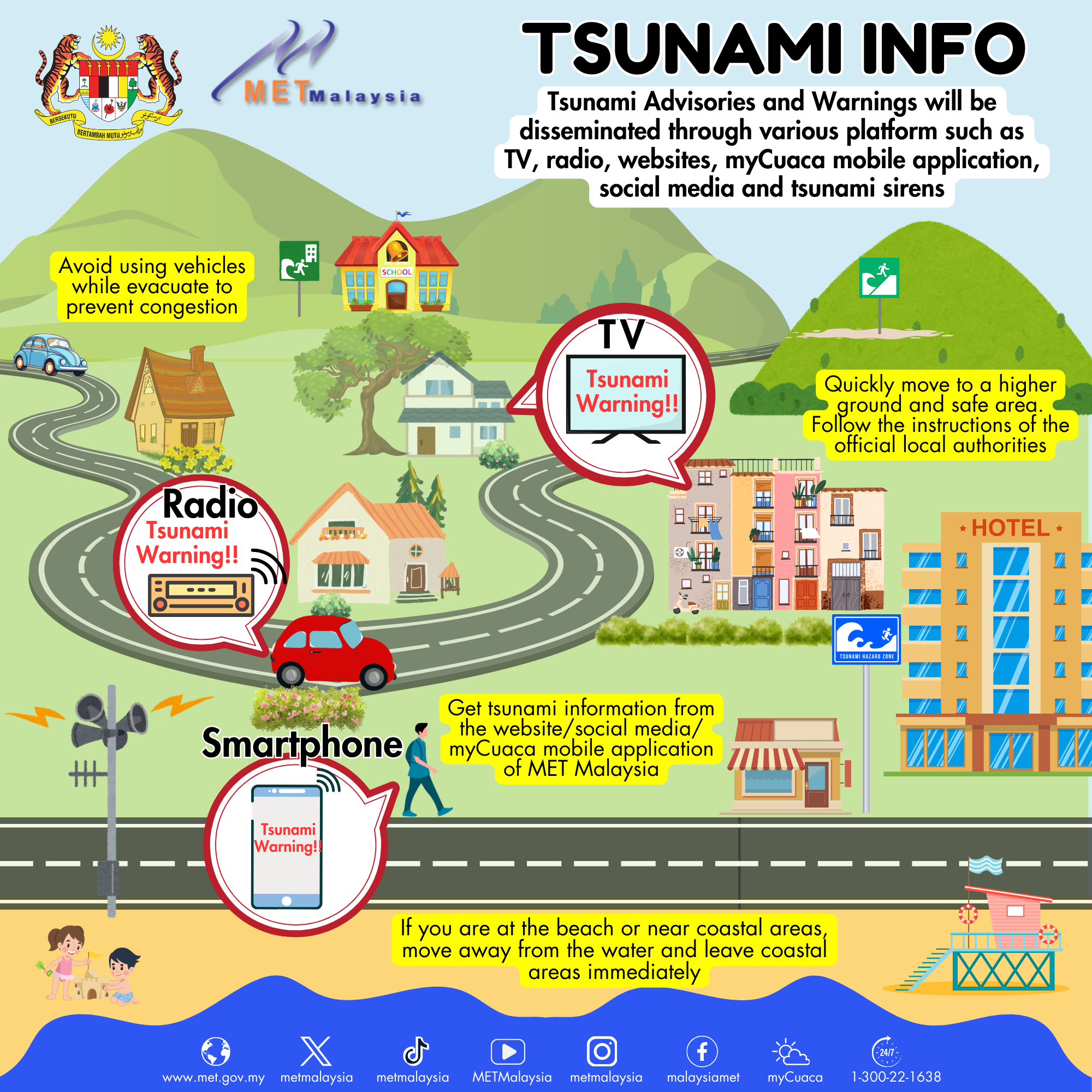What is Tsunami?
Tsunami is a Japanese word with the English translation, "harbour wave". Tsunami is a series of large waves of extremely long wavelength and long period. The time length between wave crests is ranging from 10 minutes to an hour. Tsunami wave energy extends from the surface to the bottom of the seafloor. Usually generated by a violent, impulsive undersea disturbance. When a sudden displacement of a large volume of water occurs, or if the sea floor is suddenly raised or dropped by an earthquake, big tsunami waves can be formed by forces of gravity. Earthquakes, submarine landslides, volcanic eruptions, explosions, and even the impact of cosmic bodies, such as meteorites, can generate tsunamis.
Tsunami shows different characteristics when propagates through seas with different depth. In the deep ocean, tsunami waves propagate with speed exceeding 800 km/h and wave height of a few centimeters or less. As tsunami reaches shallow waters of the coast, the waves slow down and the water can pile up to tens of metres or more in height. Tsunamis can savagely attack coastlines, causing devastating property damage and loss of life.
How do an earthquake generate tsunamis?
Tsunamis can be generated when the sea floor abruptly deforms and vertically displaces the overlying water. Tectonic earthquakes are a particular kind of earthquakes that are associated with the earth's crustal deformation. Nevertheless not all earthquakes can generate tsunami. To produce a tsunami, earthquake’s magnitude should more than 6.5 on the Richter scale with depth less than 100 km and occurring at the sea or close to the sea.
When these earthquakes occur beneath the sea, the water above the deformed area is displaced from its equilibrium position. Waves are formed as the displaced water mass, which acts under the influence of gravity, attempts to regain its equilibrium. When large areas of the sea floor elevate or subside, a tsunami can be created.
Facts on Tsunami
Tsunami waves can move from one side of the Pacific Ocean to the other in less than a day. This great speed makes it important to be aware soon as it is generated.
Offshore and coastal features can determine the size and impact of tsunami waves. Reefs, bays, entrance to rivers, undersea features and the slope of the beach all help to modify the waveform and speed of the tsunami as it attacks the coastline.
The first wave may not be the largest in the series of tsunami waves.
Tsunamis can travel up rivers and streams from the ocean.
Tsunamis can wrap around islands. Therefore, the waves are also dangerous on coasts that are not facing the source of the tsunami.
In some cases, a tsunami initially causes the water near the shore to recede, exposing the ocean floor.
Once the tsunami attacks the coasts, it can flood inland until 1 km or more, covering large expanses of land with water and debris.
The danger from a tsunami can last for several hours after the arrival of the first wave.
Damage and destruction from tsunamis are the direct result of three factors: inundation, wave impact on structures, and erosion.
Floating debris can become dangerous projectiles that may crash into buildings, piers and vehicles. This factor can also cause considerable damages.
Fires resulting from oil spills or combustion from damaged ships in port, or from ruptured coastal oil storage can cause greater damages that are inflicted directly by the tsunami.
Tsunami Safety Rules
Not all earthquakes cause tsunamis but many do. When you feel that an earthquake has occurred, stand by for a tsunami emergency message.
A tsunami is not a single wave but a series of waves. Stay out of danger areas until an "all-clear" is issued by a competent authority.
Approaching tsunamis are sometimes preceded by a noticeable rise or fall of coastal water. This is nature's tsunami warning and should be heeded.
A small tsunami at one point on the shore can be few miles away. Don't let the modest size of one make you lose respect for all.
All warnings to the public must be taken very seriously, even if some are for non-destructive events. The tsunami of May, 1960 killed 61 people in Hilo, Hawaii because some thought it was just another false alarm.
All tsunamis are potentially dangerous though they may not damage every coastline they strike.
Never go down to the shore to watch for a tsunami. When you can see the wave you are too close to escape it. Never try to surf a tsunami; most tsunamis are like a flash flood full of debris and they do not curl or break like surfing waves.
Please give your fullest cooperation to local authorities, police and other emergency organizations that try to save your life.



